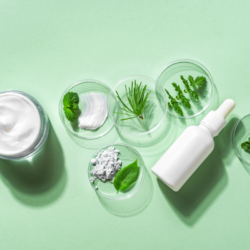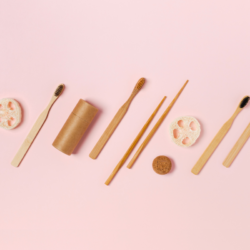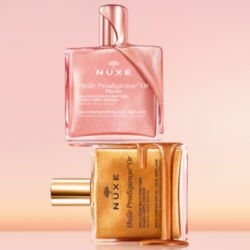A dazzling smile is the reflection of impeccable oral health and rigorous hygiene. In this article, we’ll take a look at the secrets to a beautiful smile, starting with the importance of effective brushing and the benefits of flossing, not forgetting the positive impact of using the right mouthwash. What’s more, we’ll be highlighting the food choices that can enhance or detract from the radiance of your smile. Join us on this journey towards a radiant smile that will leave no one indifferent.
Understanding your smile
A. Anatomy of a smile
The anatomy of a smile is a complex combination of various elements. At the heart of this anatomy are the teeth, which are essential for a brilliant smile. Teeth are made up of several layers: enamel, dentin and pulp. Enamel, the hard outer layer, is what we see when someone smiles. The natural colour of enamel and its integrity are key factors in an attractive smile.
Then there are the gums, a crucial element that frames the teeth. Healthy gums are pale pink in colour and adhere firmly to the teeth, playing an essential role in supporting the teeth and the aesthetics of the smile. The shape of the lips and the symmetry of the face complete the smile, contributing to its overall appearance. The mobility and health of the facial muscles, particularly those that control the lips and cheeks, are also important for a natural, relaxed smile.
B. Factors affecting the appearance of the smile
A number of factors can affect the appearance of the smile, making an understanding of these elements essential to maintaining a bright smile.Oral hygiene, for example, plays a crucial role. Poor hygiene can lead to the formation of plaque and tartar, which can discolour teeth and cause gum disease.
Diet is another important factor. Foods and drinks high in sugar or acid can erode tooth enamel and cause cavities, while staining foods such as coffee, tea and red wine can stain teeth. Smoking is also known to yellow teeth and affect gum health.
More complex factors include genetics, which play a role in tooth structure and oral health, and age, which can affect tooth colour and gum health. In addition, certain medications and medical conditions can have an impact on the appearance of the smile. For example, certain medications can cause dry mouth, which increases the risk of cavities and gum disease.
How can I maintain my dental hygiene to keep my smile looking its best?
A. How do you brush your teeth effectively?
Brushing your teeth is the cornerstone of good oral hygiene. For effective brushing, we recommend using a soft-bristled toothbrush and a natural toothpaste with essential oils. Technique is just as important: brush all surfaces of the teeth, including the front, back and chewing surfaces, for at least two minutes, twice a day. It’ s essential to replace your toothbrush every three to four months, or sooner if the bristles are worn.
B. Why and how to use dental floss?
Dental floss plays a crucial role in removing food particles and plaque from between the teeth, where the toothbrush cannot reach. We recommend flossing once a day, preferably in the evening. Use around 18 inches of floss, guiding it gently between the teeth with a sawing motion, and forming a “C” around each tooth to effectively clean the interdental spaces.
C. What are the benefits of mouthwash?
Using a mouthwash can complement brushing and flossing. Antibacterial mouthwashes help to reduce plaque, fight gingivitis, freshen breath and strengthen enamel with ingredients such as fluoride. It is advisable to follow the manufacturer’s instructions on rinsing time and not to rinse your mouth out with water immediately afterwards to maximise the product’s effectiveness. It’s important to choose a mouthwash suited to your specific needs, and if in doubt, to consult a dental professional.
Food and dental health: What do we need to know?
A. Which foods are good for dental health?
Studies show that a balanced diet plays a crucial role in dental health. Calcium-rich dairy products such as milk, cheese and yoghurt are essential for strengthening tooth enamel. Combining calcium with vitamin D, found in eggs and certain fish, promotes calcium absorption. Crunchy fruit and vegetables, such as apples and carrots, stimulate the production of saliva, naturally cleaning the teeth. Foods containing phosphorus, such as nuts and meat, also help to preserve tooth enamel.
B. Which foods and drinks should be avoided?
Research confirms that excessive sugar consumption is one of the main causes of tooth decay. We therefore recommend moderating the consumption of sugary foods and drinks, such as soft drinks, sweets and pastries. Acidic drinks, such as soft drinks and fruit juices, can cause erosion of tooth enamel. Beverages such as coffee, tea and red wine can stain teeth, even though they have certain health benefits when consumed in moderation. It is advisable to rinse your mouth out with water after drinking them to reduce staining and the effect of acid erosion.
By adapting your diet, you’ll not only promote the health of your teeth, but also help to maintain a radiant smile.
What natural treatments are there to whiten teeth?
To maintain a brilliant smile, a good oral care routine is essential. This includes frequent brushing, regular use of dental floss and mouthwash. These practices help prevent plaque and yellowing of the teeth. However, if you find that your teeth have lost some of their whiteness, there are natural remedies to restore a radiant smile.
Vegetable charcoal: A miracle ingredient for teeth whitening
Vegetable char coal is a popular choice for natural teeth whitening. Derived from the carbonisation of wood and other carbon-rich materials, vegetable charcoal is renowned for its effectiveness. For example, BBryance’s Whitening Charcoal Powder, made from charcoal and coconut shell, is both effective and easy to use. This powder acts as a gentle scrub, removing stains from enamel and helping to whiten teeth, while combating bad breath. It comes with a specially designed toothbrush for optimum application.
Peau d’Orange: A natural tip for whiter teeth
Thanks to its active compounds, orange peel is an excellent natural way of removing tooth stains. Gently rub the inside of the orange peel onto your teeth and leave for 30 minutes before brushing as usual. For best results, combine this practice with the use of an eco-friendly toothbrush, such as the EcoBamboo toothbrushes from Bryance.
Aloe Vera : A gentle, effective whitening agent
Aloe vera, known for its soothing and healing properties, is also a natural solution for whitening teeth. Apply a little Aloe vera gel to your teeth before brushing for a gentle whitening effect.
Coconut Oil: For a healthy mouth and white teeth
The practice of oil pulling with coconut oil, which involves rinsing the mouth with this oil, is beneficial for oral health and whiter teeth. This traditional method helps to reduce bacteria and minimise plaque.
The effectiveness of oil pulling, particularly with coconut oil, in improving oral hygiene has been examined in several studies. The results suggest that this practice could have a beneficial effect on oral health and dental hygiene. One study showed a statistically significant reduction in the number of Streptococcus mutans, a bacterium implicated in the formation of caries, in people practising oil pulling with coconut oil, compared with a group using a chlorhexidine-based mouthwash. This indicates that oil pulling could be a safe and effective alternative to traditional mouthwashes.
Hydrogen peroxide: A whitening agent to be used with caution
Hydrogen peroxide is an effective bleaching agent when used in moderation. Although it is a component of many professional whitening products, excessive use or use at too high concentrations can damage tooth enamel.
Baking soda: Beware of abrasiveness
Baking sod a is renowned for its whitening properties, but it should be used with caution. Its abrasive nature can damage enamel if used frequently or aggressively.
How do you get a star smile?
To achieve a star smile with whiter teeth, a number of products and techniques are available, including those offered by brands such as BBryance. These solutions, which are often more affordable than treatments at the dentist, can offer impressive results.
Are home whitening kits effective?
Home whitening kits, such as those offered by BBryance, generally include a hydrogen peroxide-based whitening gel, a tray for applying the gel, a colour chart for monitoring progress, and crucially, an LED lamp which plays an important role in activating the gel and speeding up the whitening process. It has been reported that these kits can help eliminate stains caused by drinking certain beverages or smoking, and offer whitening of 2 to 9 shades in just 30 minutes.
Can LED light whiten teeth?
Scientific studies on tooth whitening with LED light support its effectiveness and safety. A study published on PubMed examined the effectiveness of LED light for teeth whitening. This study concluded that LED irradiation can be used for tooth whitening because it produces significant colour changes while preserving the integrity of the enamel and without causing genotoxic effects on vital cells. Another study confirmed that LED was not as effective on its own as when combined with a bleaching agent, but it was comparable to more traditional treatments with better results in terms of pain.
These results suggest that home methods using LED light could offer a convenient and less painful alternative to more traditional treatments. However, it is always advisable to consult a dentist before undertaking any teeth whitening treatment, particularly for people with sensitive teeth or existing dental problems.
Read more:
- Photodiagnosis Photodyn Ther . 2022 Sep:39:102965. doi: 10.1016/j.pdpdt.2022.102965. Epub 2022 Jun 19.
Violet led dental whitening: Effectiveness and biological safety: An in vitro study - Randomized Controlled Trial Photodiagnosis Photodyn Ther. 2021 Sep:35:102385. doi: 10.1016/j.pdpdt.2021.102385. Epub 2021 Jun 9.
Clinical evaluation of in-office tooth whitening with violet LED (405 nm): A double-blind randomized controlled clinical trial - J Contemp Dent Pract. 2016 Jan 1;17(1):38-41. doi: 10.5005/jp-journals-10024-1800.
The Effect of Coconut Oil pulling on Streptococcus mutans Count in Saliva in Comparison with Chlorhexidine Mouthwash - Nutrients. 2020 Sep 6;12(9):2724. doi: 10.3390/nu12092724.
The Impact of Diet, Nutrition and Nutraceuticals on Oral and Periodontal Health





